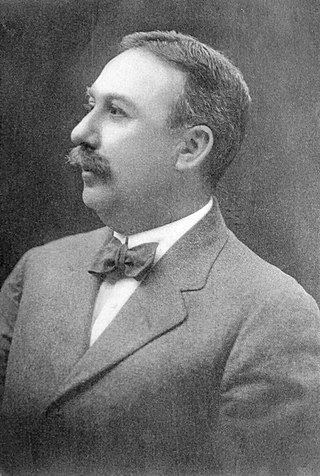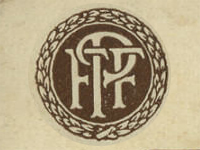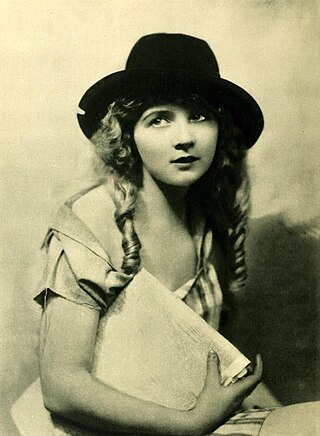3D films are motion pictures made to give an illusion of three-dimensional solidity, usually with the help of special glasses worn by viewers. They have existed in some form since 1915, but had been largely relegated to a niche in the motion picture industry because of the costly hardware and processes required to produce and display a 3D film, and the lack of a standardized format for all segments of the entertainment business. Nonetheless, 3D films were prominently featured in the 1950s in American cinema, and later experienced a worldwide resurgence in the 1980s and 1990s driven by IMAX high-end theaters and Disney-themed venues. 3D films became increasingly successful throughout the 2000s, peaking with the success of 3D presentations of Avatar in December 2009, after which 3D films again decreased in popularity. Certain directors have also taken more experimental approaches to 3D filmmaking, most notably celebrated auteur Jean-Luc Godard in his film Goodbye to Language.

Edwin Stanton Porter was an American film pioneer, most famous as a producer, director, studio manager and cinematographer with the Edison Manufacturing Company and the Famous Players Film Company. Of over 250 films created by Porter, his most important include What Happened on Twenty-third Street, New York City (1901), Jack and the Beanstalk (1902), Life of an American Fireman (1903), The Great Train Robbery (1903), The European Rest Cure (1904), The Kleptomaniac (1905), Life of a Cowboy (1906), Rescued from an Eagle's Nest (1908), and The Prisoner of Zenda (1913).

The Famous Players Film Company was a film company founded in 1912 by Adolph Zukor in partnership with the Frohman brothers, powerful New York City theatre owners and producers.

Harold A. Lockwood was an American silent film actor, director, and producer. He was one of the most popular matinee idols of the early film period during the 1910s.

Helen Marguerite Clark was an American stage and silent film actress. As a movie actress, at one time Clark was second only to Mary Pickford in popularity. With a few exceptions and some fragments, most of Clark's films are considered lost.

Fred J. Balshofer was a pioneering silent film director, producer, screenwriter, and cinematographer in the United States.

Hearts Adrift is a 1914 American silent short romance film directed by Edwin S. Porter. The film is now considered lost.

Tess of the Storm Country is a 1914 silent drama directed by Edwin S. Porter. It is based on the 1909 novel of the same name by Grace Miller White. It stars Mary Pickford, in a role she would reprise eight years later for the 1922 adaptation by John S. Robertson.

Wildflower was a 1914 American silent romantic drama film produced by Adolph Zukor and directed by Allan Dwan. It stars stage actress Marguerite Clark in her first motion picture. Clark would be one of the few stage stars to go on to superstardom in silent pictures. The film is now presumed lost.

The Seven Sisters is a 1915 American silent romantic comedy directed by Sidney Olcott. Based on the 1911 ensemble play Seven Sisters by Edith Ellis Furness and Ferenc Herczeg, the film starred Madge Evans, Marguerite Clark, and Conway Tearle. The film is now presumed lost.

Are You a Mason? is a 1915 American silent comedy film produced by Adolph Zukor and Charles Frohman, and distributed through Paramount Pictures. Directed by Thomas N. Heffron, it starred John Barrymore as a young husband who pretends to join the Masons as an excuse to get out of the house. It was based on a 1901 play by Leo Ditrichstein.

Such a Little Queen is a 1914 American silent film starring Mary Pickford. It is based on a 1909 play by Channing Pollock which starred Elsie Ferguson. This film would later be remade in 1921 with Constance Binney in the lead. Cinematographer Ernest Haller was in charge of photography on both films.

Gladys Leslie Moore was an American actress in silent film, active in the 1910s and 1920s. Though less-remembered than superstars like Mary Pickford, she had a number of starring roles from 1917 to the early 1920s and was one of the young female stars of her day.

Jim the Penman is a 1921 American silent crime drama film produced by Whitman Bennett and distributed through Associated First National, later just First National Pictures. It is based on a well known play, Jim the Penman by Charles Lawrence Young about a forger in Victorian Britain. The film stars Lionel Barrymore and was directed by Kenneth Webb, the duo having worked on The Great Adventure previously. Jim the Penman is preserved though incomplete at the Library of Congress.

The Dictator is a 1915 American silent comedy film directed by Oscar Eagle and reputedly Edwin S. Porter. It was based on a play The Dictator by Richard Harding Davis and produced by Adolph Zukor and the Charles Frohman Company. John Barrymore stars in a role played on the stage by William Collier, Sr. whose company Barrymore had performed in this play. The film was rereleased on April 13, 1919 as part of the Paramount "Success Series" of their early screen successes. The story was refilmed in 1922 as The Dictator starring Wallace Reid. Today both films are lost.

The County Chairman is a lost 1914 silent film drama directed by Allan Dwan, produced by the Famous Players Film Company and distributed through Paramount Pictures. It is based on the 1903 stage play by George Ade that starred Maclyn Arbuckle, who reprises his role in this film. Also starring alongside Arbuckle is up-and-coming heartthrob Harold Lockwood. The story is typical of the stage plays Adolph Zukor brought to films for his Famous Players Company in its earliest years. This film was remade by Fox in 1935 with Will Rogers.

The Crucible is a 1914 American silent romantic drama film directed by Edwin S. Porter and Hugh Ford and released through Paramount Pictures. Based on a novel of the same name by Mark Lee Luther (1872–1951), the film stars Marguerite Clark and Harold Lockwood. The film is now presumed lost.

The Prince and the Pauper is a lost 1915 silent film adventure starring Marguerite Clark based on the 1881 novel by Mark Twain. The film was produced by the Famous Players Film Company and was directed by Edwin S. Porter and Hugh Ford.

His Neighbor's Wife is a 1913 silent short film directed by Edwin S. Porter and starring Victorian actress and celebrity Lillie Langtry in her only feature screen appearance. It was produced by Adolph Zukor's Famous Players Film Company and distributed on a State's Rights basis.

Marguerite Leslie was a Swedish-born English actress.



















